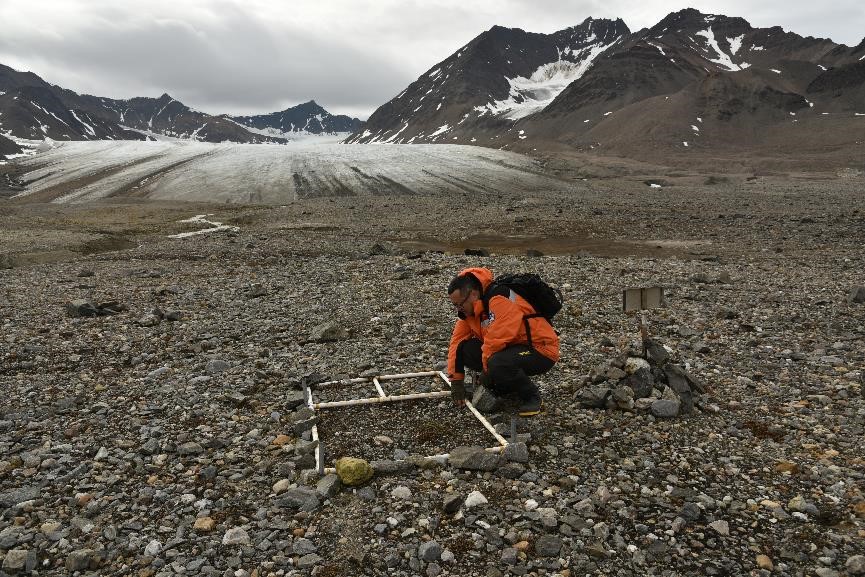From July 2 to July 20, 2024, Dr. YANG Jian from the Institute of Botany, CAS, embarked on a visit to the Chinese Arctic Yellow River Station in Ny-Alesund, Svalbard, to conduct a vegetation survey in the region.
The Chinese Arctic Yellow River Station is China's first scientific research station in the Arctic region. It provides crucial support for investigations into Sun-Earth interactions, changes in the Arctic climate and environment, and their relationship with global change, benefiting both China and the international community.
Since 2011, Dr. YANG Jian and his research team have established and maintained a monitoring program of permanent vegetation plots in the vicinity of the Chinese Arctic Yellow River Station. Their efforts have amassed a wealth of continuous observational data, which is unraveling the intricate response of Arctic vegetation to global changes. These plots have become an integral part of China's terrestrial ecosystem monitoring network in the Arctic. Through persistent, long-term observations of plant species composition and abundance within climate-sensitive zones, coupled with the annual accumulation of data, this endeavor enables a nuanced, centennial-scale analysis of the intricate interplay between plant biodiversity and global climate change.

(Photo provided by Dr. YANG Jian)
From July 2 to July 20, 2024, Dr. YANG Jian from the Institute of Botany, CAS, embarked on a visit to the Chinese Arctic Yellow River Station in Ny-Alesund, Svalbard, to conduct a vegetation survey in the region.
The Chinese Arctic Yellow River Station is China's first scientific research station in the Arctic region. It provides crucial support for investigations into Sun-Earth interactions, changes in the Arctic climate and environment, and their relationship with global change, benefiting both China and the international community.
Since 2011, Dr. YANG Jian and his research team have established and maintained a monitoring program of permanent vegetation plots in the vicinity of the Chinese Arctic Yellow River Station. Their efforts have amassed a wealth of continuous observational data, which is unraveling the intricate response of Arctic vegetation to global changes. These plots have become an integral part of China's terrestrial ecosystem monitoring network in the Arctic. Through persistent, long-term observations of plant species composition and abundance within climate-sensitive zones, coupled with the annual accumulation of data, this endeavor enables a nuanced, centennial-scale analysis of the intricate interplay between plant biodiversity and global climate change.

(Photo provided by Dr. YANG Jian)
